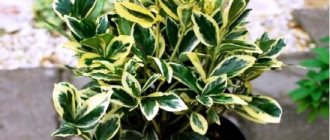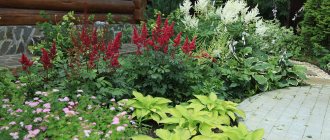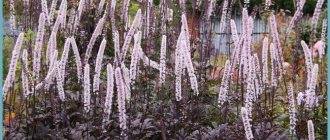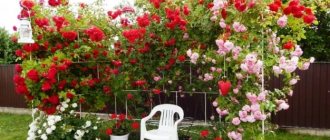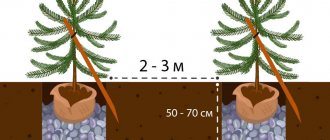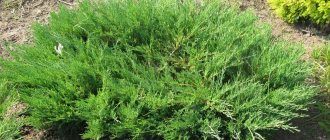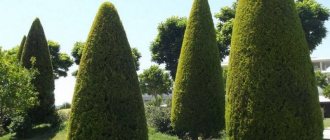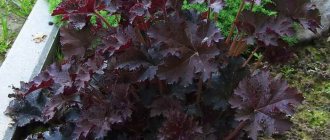Origin and appearance
This perennial plant is often found in nature in Asian countries, Japan, China and Mongolia. Flower growers count about 350 varieties, which differ from each other in the shape of leaves, inflorescences, and flowering periods.
In the description of decorative characteristics, the main attention is paid to the shape of the inflorescences: they can be drooping, paniculate, pyramidal or diamond-shaped. In addition, plants are classified by type, height and size of the bush. Dwarf specimens reach a height of no more than 30 cm, and the tallest ones reach up to 1 m.

Until recently, only experienced gardeners used Astilbe for landscaping, but now summer residents are decorating their plots with it more and more often. Unusual species with original colors are especially popular. Just look at the photo of Astilbe flowers to be inspired to create an interesting design.
Types of astilbe
According to various sources, astilbe has up to 40 species, but only 10-12 of them are planted in gardens. They differ from each other not only in appearance, but also in the time of flowering: early, middle and late, from June to August.
Simple leaf astilbe
This is a decorative openwork hybrid in the form of small graceful bushes up to 0.5 m in height. The variety does not tolerate heat and dry air well, but under favorable conditions it is deservedly considered one of the most beautiful with its delicate, loose flowers against the backdrop of bronzed foliage.

Astilbe Thunberg
This is a very graceful variety with dense white flowers collected in large racemes. They reach up to 10 cm in diameter and up to 25 cm in length, and they bloom until August. Lace tassels look even brighter against the backdrop of complex, jagged leaves of a rich green hue.
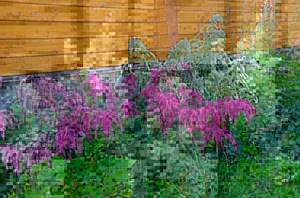
Astilbe Arends
This is the main and most popular species, on the basis of which dozens of hybrids have been bred. Powerful spreading bushes in the shape of a ball or a pyramid grow by a meter. Against the background of dark green foliage, white, lilac, soft pink and scarlet inflorescences stand out, which bloom luxuriantly for up to 35 days.
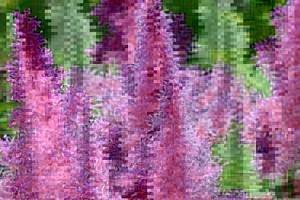
Astilbe David
A spreading, powerful and wide bush grows up to 1.5 m and is distinguished by its impressive shape. The second feature of the variety is pale wrinkled leaves of an unusual configuration with brown veins. The drooping inflorescences are collected from lacy pink-lilac flowers that look fresh and romantic.
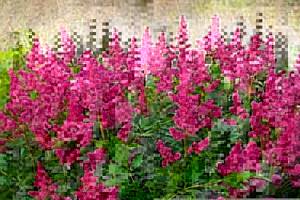
Astilbe japonica
A miniature decorative variety does not grow higher than 0.7-0.8 meters with dense, glossy leaves with veins. Fluffy panicles-inflorescences are painted white, pink or deep burgundy. Modern varieties are resistant to cold and easily take root in difficult conditions.
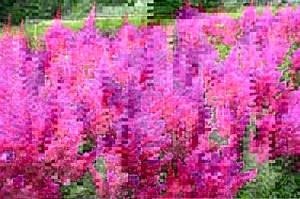
Astilbe naked
This is an unusual dwarf bush, the height of which rarely exceeds 13 cm. The small rounded bush is also notable for its bronze leaves, which clearly stand out against the background of the grass.
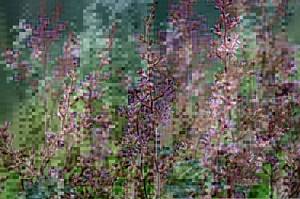
Astilbe chinensis
Another classic variety up to 110 cm high with long and dense lilac inflorescences. White or pink flowers are less common, but they are always small and delicate. An interesting feature is the unusual configuration of the foliage: large basal plates on long stalks become smaller and more graceful towards the top.
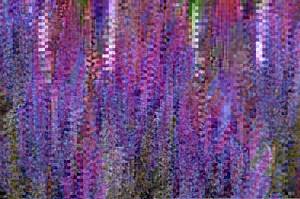
Plant height
To decorate the garden, choose both low-growing and medium-sized or tall specimens. Depending on the task that Astilbe performs in landscape design, flower growers give preference to different options. Usually several types are used at the same time.

Spectacular long shoots with bright inflorescences can decorate any flower bed, lawn or pond. Primroses, irises, and hosts go well with them. Low-growing species are usually used to decorate alpine slides.
Bloom
Astilbe blooms in open ground in midsummer - July. But some hybrid species may begin flowering in the spring or at the very end of the hot season. This allows you to create luxurious flower beds that will delight you for many months. Flower growers note that in some climatic conditions, Astilbe's flowering can continue until the end of September. In addition, spectacular “lace” foliage decorates the site all year round.
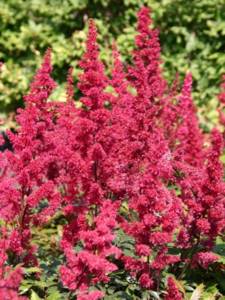
Varieties
Europe
Astilbe japonica Europa. The perennial is characterized by a medium-sized spreading bush. The maximum length of the peduncles is 50 cm, the tops are crowned with pleasant-looking, delicate pink brushes. The color is pure, without foreign impurities, pastel. The length of the cone-shaped (diamond-shaped) panicles is 15 cm. The inflorescences are dense, lush, odorless.
The leaves are trifoliate, bright, fern-colored. Even without flower stalks, the bush looks quite decorative.
The vegetative mass increases in the first ten days of May. From 30-31.05 the perennial begins to set buds. Astilbe Europe blooms by the end of June. The brushes will wither in 20-25 days.
Features of culture:
- good adaptation to sunlight;
- tolerance to stagnant water.
Knowing about the indicated advantages of the perennial, gardeners continue to plant this variety in partial shade and with moderate soil moisture. The explanation is simple: in open areas the bushes look faded and expressionless. The shadow reveals and emphasizes the tenderness of the inflorescences.
Excess water, although not detrimental to the plant, does not at all increase its decorative value.
On a note! Good neighbors of astilbe Europa are: peony, Siberian iris, hosta, tulip.
Montgomery
It is impossible to describe this variety without emotions. Blood-red panicles on brown stems combined with dark leaves become the central element of any flower garden. Peduncles are erect, ±65 cm high, form neat dense bushes.
The leaves are bipinnate, burgundy in spring with a brownish tint. By summer, the leaves actively turn green, stretch out, forming a lush mass up to 40 cm high. Only the petiole and the base of the central vein remain reddish from their previous color.
The rhombic inflorescence of Montgomery astilbe is dense and wide (up to 10 cm). Brush length 17 cm.
The perennial blooms in the second decade of July. The panicles glow in the flowerbed for about 12 days, regardless of whether the bush is planted in the shade or in the sun. At the beginning of August, Montgomery's flower stalks are removed so that the plant does not waste energy on ripening the seeds.
Timely pruning of non-decorative brushes is the key to lush flowering of this Japanese astilbe in the next summer season.
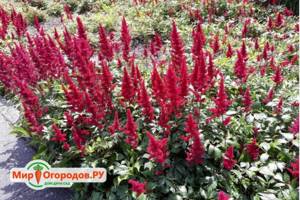
Deutschland
The variety was first obtained in 1920 thanks to the efforts of the hereditary gardener, breeder G. Arends. The decorative Japanese hybrid grows within 60 cm. Leaves without peduncles form compact but spreading 30-centimeter bushes.
The moderately dense snow-white inflorescence opens in early July (slightly later than the astilbe of Europe). It blooms for an average of 20 days. In size, paniculate racemes reach 15, less often 20 cm. Compared to Washington or Diamant, astilbe Deutschland shows the world denser, fluffy panicles.
Towards the end of flowering, the color of the inflorescences changes and acquires a creamy hue.
The basics of agricultural technology are standard: planting on loam in diffuse partial shade, constantly maintaining moderate soil moisture.
Washington
In the horticultural market it is positioned as a variety belonging to the Japonica Hybrida group. The low bush (30-40 cm) almost doubles in size thanks to the peduncles, reaching 60, rarely 80 cm. Beautiful juicy light green foliage is very decorative due to its openwork contours.
Compared to the Deutschland variety, the white panicle of this Japanese astilbe looks much weightless and lighter. The shape is rhombic. Washington begins to bloom in the first ten days of July.
Agricultural technology without any special features. Easy to care for, Astilbe Washington, like other species, loves coolness, humidity and diffuse partial shade.
Dusseldorf
Astilbe Dusseldorf is a medium-sized variety from the Hybrid group. The height of the bush with panicles barely reaches ½ m, without them - 30 cm. The inflorescences are large, about 15 cm, dark pink, rhombic. Mature leaves display a forest green color.
The spring increase in vegetative mass occurs in early May. The budding period begins on June 5th. The first ten days of July mark the beginning of flowering, which, according to the botanical description, ends in the same month.
On a note! Gardeners note that in practice this variety of astilbe contradicts the characteristics declared by the breeders, and blooms much longer, until the end of August.
Astilbe Dusseldorf is one of the few varieties that survive well in the sun, no worse than the perennials from the Vision series. The only condition for successfully growing a flower in an open area is to increase the amount and frequency of watering.
The remaining advantages of the perennial are not uncommon and are characteristic of all varieties of Japanese astilbe: frost resistance, disease resistance and ease of care.
Red Sentinel
This astilbe comes from Holland, the result of the painstaking work of breeder Den Oden. The perennial generally repeats the characteristics characteristic of Japanese hybrids.
The height of the bush is within the normal range - 50-55 cm. Spring red-brown leaves radically change color by summer, becoming dull green. In this case, the axis of the leaves and peduncles remains with a red tint. Leaf petioles are pure green.
The rhombic inflorescences are large, about 18-20 cm, dark red in color. Externally, this astilbe is often confused with Montgomery. Indeed, the similarities between the varieties are enormous.
However, if you look closely at the bushes and plant samples nearby, you will notice that Red Sentinel astilbe is 10–15 cm lower and stockier than Montgomery. The last panicle is smaller, the anthers are pale pink, the sepals are red, while the Dutch specimen has clearly larger inflorescences, the anthers are blue, and the sepals are white and pink.
Montgomery's flowering start date is July 17, Red Sentinel will bloom two days later on July 19.
Elizabeth Van Veen
Fans of Japanese astilbes in red colors should pay attention to Elizabeth van Veen. In the shade, the hybrid grows no higher than 60 cm, in a sunny area even less - within 40 cm.
In spring, the young leaves of the perennial attract the eye with an interesting brown-red color. Over time, the vegetative mass of astilbe turns green, leaving only the peduncles and petioles brown.
The dark green feathery leaves of Elizabeth van Veen are extremely decorative. The gardener is even more captivated by the original violet-crimson or even violet-lilac shades of rhombic panicles.
The beginning of flowering is mid-July, 14-17. The loss of decorative panicles occurs at the beginning of August. After cutting off the flower stalks, the garden continues to be decorated with openwork leaves with a fringed (toothed) border.
This variety is often confused with Vision in Red. Externally, the plants are indeed similar. However, Elizabeth Van Veen is a little softer and lighter than her competitor. Visions in Red, on the other hand, is taller and stronger.
Peach blossom
The height of the bushes varies between 60-70 cm. This is one of the early flowering varieties of Japanese astilbe, which opens the garden season. Throws out buds on par with Europe or two days later. And in fact, he is very similar to her. However, we should not forget that the shape of the inflorescences of the Europa variety is rhombic (or cone-shaped), while that of the twin Peach Blossom is paniculate.
There are also obvious differences in the leaves. The internodes of Peach Blossom are green with a reddish (reddish) tint, while the internodes of Europe do not contain such inclusions.
And finally, the human eye does not always detect subtle differences in the tones of inflorescences. Peach Blossom has salmon or peach pink panicles, while Europa has clean, pale pink panicles.
Features of this Japanese astilbe: closer to flowering, the clusters become unrecognizably lush, and in dense shade the perennial practically does not throw out flower stalks.
Rhineland
The variety first saw the light more than 90 years ago. This is entirely thanks to Anders. The medium-sized Japanese hybrid reaches a height (together with peduncles) of ±70 cm, without them ±35.
Huge pyramidal panicles (18-25 cm) are surrounded by bronze-green shiny openwork foliage. Pinkish-carmine inflorescences decorate the garden from the beginning of July for 20 days.
This is an ideal variety for growing near a pond. Gardeners note that partial shading of Rhineland astilbe significantly increases the decorative properties of the perennial.
Color spectrum
The leaves of the plant may have a shine and sometimes a light fluff, and their colors vary from light to dark green. Large pyramidal inflorescences are:
- creamy;
- white;
- yellow;
- scarlet;
- pink;
- raspberry;
- purple.
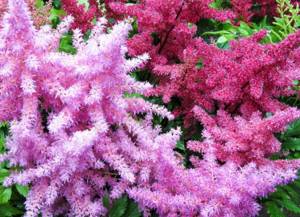
This choice leaves enormous scope for design imagination. With the help of plants, the site can be decorated in the best possible way.
Features of astilbe in landscape design
A truly beautifully flowering perennial, astilbe has lush foliage with large paniculate inflorescences of different shades. The most common colors are red, white, lilac, pink and burgundy. Most often, this plant is grown in groups on lawns. In addition, astilbe feels great near ponds, but only under trees. Therefore, they are mainly combined with moisture-loving and shade-tolerant plants in one composition. These include ferns, aquilegia and others.
As for flowering, astilbe leaves bloom in May. In this case, shoot regrowth begins at the end of April, and flowering itself begins at the end of June. For late-flowering varieties it may even occur in the second half of August. But in general, it is believed that astilbe blooms for quite a long time. Because it mainly lasts from July to August. Often during this period, flowers are cut to dry for decorative winter bouquets. They look luxurious in the interior and create a feeling of comfort.

Growing conditions
After planting Astilbe in open ground, it feels great in one place for up to 5 years, without needing replanting. It is propagated by cuttings or dividing the bush, and somewhat less commonly by seeds.
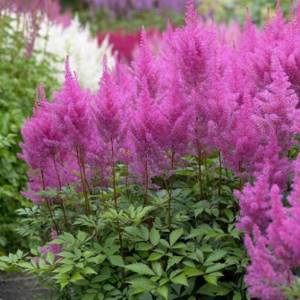
Caring for it is quite simple if you plant it in shaded areas: this guarantees long and abundant flowering throughout the season. The main conditions for success are timely watering and removal of dead flower stalks.
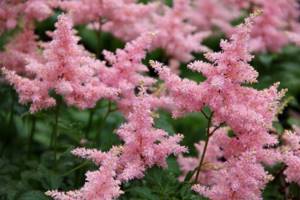
Planting by seeds
The method is suitable for breeding new ones and allows you to grow already known varieties. Sowing begins in early March by preparing a special soil substrate. To do this, mix peat and sand in equal quantities and place them in a deep container. Cover the mixture with a small amount of snow, and distribute the prepared seeds over the surface. Its melting will be accompanied by moistening the soil, saturating it with microelements, and the seed will naturally sink inside.

And after the snow has completely melted, wrap the container in a bag and leave it in the refrigerator for several weeks. The seeds do not reach until the seedlings appear. Afterwards, the seedlings are removed to a warm (+18…+22 °C), well-lit place until 3 leaves appear, and then they are planted separately. Watering is carried out with a syringe at the root. Otherwise there is a risk of damage.
Soil selection and planting
Astilbe must be planted in light, fairly loose soil, since it does not like too dense soil. In principle, Astilbe adapts to any soil composition, but in areas with high groundwater it develops better and blooms longer. The presence of potassium and phosphorus in the upper layers of the earth is a necessary condition for planting.

In the right place, the plant quickly takes root. Tall specimens must be planted 50 cm apart, low-growing specimens – 30 cm.

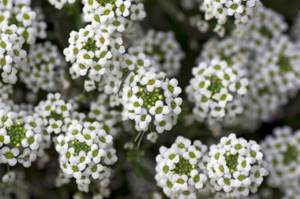
Ground cover (creeping) perennials blooming all summer: types, names, photos, description. TOP 10 best options for a summer residence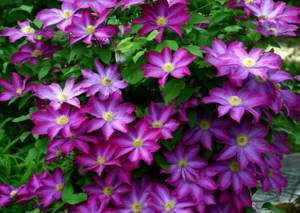
Clematis flowers - 70 photos of a beautiful flower. Planting, growing and care in open ground
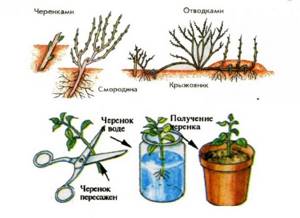
Pelargonium in open ground: planting, growing, care, reproduction, photo
Before planting, the soil needs to be dug up, weeds removed, and fertilized with compost or decomposed peat. To maintain constant soil moisture, experts advise mulching it with straw, bark, small pebbles or sawdust. This will also create comfortable conditions for wintering. The plant does not need weeding.
Diseases and pests
In the middle zone there is a relatively small variety of insects that can harm crops (3 in total). The remaining pest populations are common in the homeland of astilbe. In order to prevent the appearance of unwanted guests, they get rid of weeds in a timely manner and do not plant densely. If it was not possible to avoid pests, then immediate measures are taken to remove them.
The spittlebug lays larvae in the leaf axils, and soon foamy lumps appear there. This causes the leaves to wrinkle and become spotted, and then the bush itself withers. Both traditional and chemical methods are used to combat pennies.
The lumps are sprinkled with wood ash, thus destroying the larvae inside, or they resort to such means as karofos or actara.
The strawberry nematode causes damage to almost all parts of the plant - buds, leaves and flowers. Subsequently, they undergo deformation and acquire unwanted brown spotting, while the development of the bush significantly slows down.
A sign of the presence of a root-knot nemotode is considered to be growths on the surface of the roots; it is inside these formations that the pest lives, even though it is small in size. During the second period of the growing season, the nematode becomes easily noticeable. They first slow down the development of the bush, and after a while even lead to its death. As a preventive measure, they try to inspect the plant more often; if there are symptoms of the disease, the perennial is destroyed. Carry out timely weeding, especially in the first growing season. Treated with Fitoverm.
